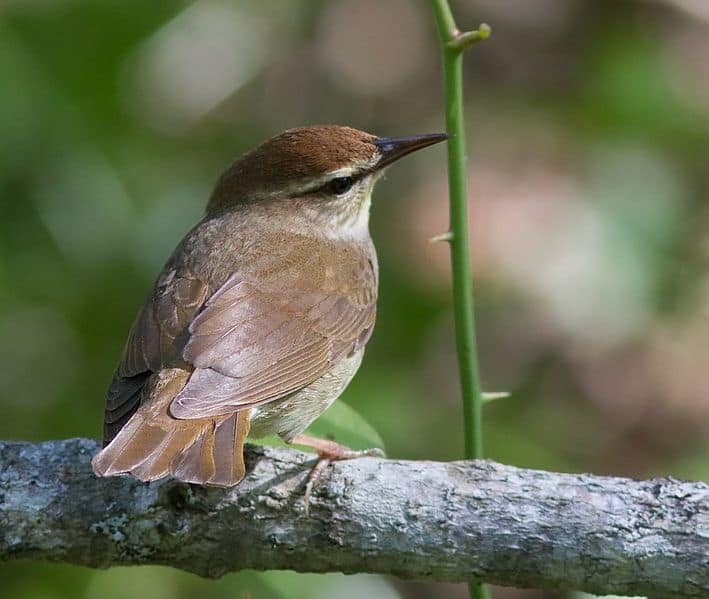Look For
The Swainson’s warbler is a small bird with a plain, nondescript appearance. Its back and wings are brown, splotched with hints of pale rust of the solid cap. A lighter streak above the eye contrasts with the darker crown, while the lower parts of the bird are a murky off-white.
Unlike most warblers, male and female Swainson’s warblers are identical in appearance. These birds are rarely observed due to the fact that they spend most of their time concealed while foraging in thick undergrowth.
Listen For
The Swainson’s warbler is most famous for its loud, musical song. Most people become aware of its presence from hearing it rather than seeing it. It sings a short series of clear, loud notes followed by quick, descending whistles that jumble together. “So-so-so-so-sweet-to-hear.” The Swainson’s warbler’s song is often compared to that of the Louisiana waterthrush.
Find it
Swainson’s warblers prefer to breed in wet regions including the swamps and lowlands of the southern coastal plains and moist forests in the Appalachian region. They prefer areas with thick undergrowth, especially canebrakes and dwarf palmetto in river floodplain forests and rhododendron in Appalachia. In the winter, they migrate to Central America where they inhabit the undergrowth of tropical forests.
Feeding Behavior
Swainson’s warblers are dedicated foragers that feed on insects and larvae. They prefer a vast variety of caterpillars, flies, beetles, ants, crickets, grasshoppers, millipedes, and spiders. Unlike other warblers, they do not eat berries or nectar of any kind. They find food by using their long bills to poke around the ground and probe fallen leaves.
Nesting Behavior
They typically build their nests near a dense thicket of cane, rhododendron or vines growing somewhere near water. The females use leaves, sticks, and vines to create large and bulky nests. The open cup shape is lined with pine needles, moss, hair, and grass.
The female lays 2-5 eggs that are a plain, unmarked white, though on occasion that can have faint speckling. The female incubates the eggs for 13-15 days before hatching. Both parents feed young for 10-12 days, then for an additional 2-3 weeks after they leave the nest.




